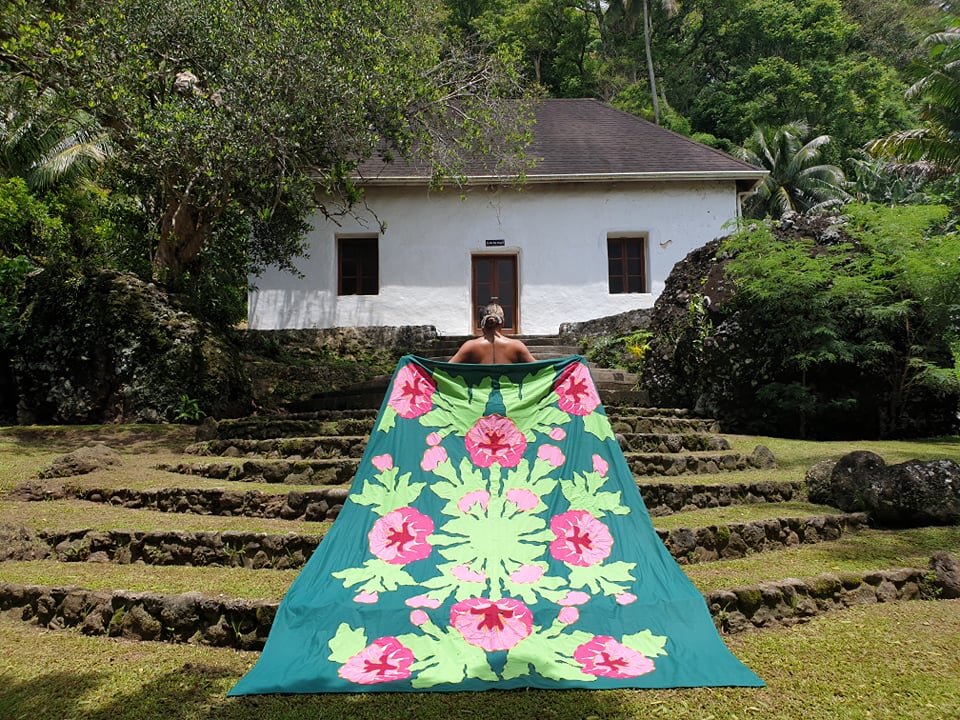Tivaevae. The fabric art of the Cook Islands. We supply beautiful machine appliqued and machine washable tivaevae for everyday use and we work with local Cook Island artisans to supply traditionally handmade tivaevae and crafts. Kia Manuia.

Tivaevae. The fabric art of the Cook Islands. We supply beautiful machine appliqued and machine washable tivaevae for everyday use and we work with local Cook Island artisans to supply traditionally handmade tivaevae and crafts. Kia Manuia.

Traditional Tivaevae take years to make. A design is first created and each woman in the sewing group has a specific part of the pattern to complete. Cutting and matching of the shapes is done before sewing can begin under the watchful eye of the designer.
Tivaevae - The word is as Polynesian in flavour as the exotic names of the pacific places it belongs to: the Cook Islands of Rarotonga, Aitutaki, Mangaia, and Atiu. A visit to any of these Islands is a visit to paradise.
To translate the word tivaevae risks losing its meaning and poetry. The ‘loose’ translation – Polynesian bed cover – is inadequate, while the literal alternative – to patch repeatedly- is too narrow. To simplify matters, tivaevae is a term that is now used to refer to all applique and piecework fabrics from the islands of Polynesia.
It is not certain how and when Western quilts and quilting techniques were introduced to the Cook Islands. The piecework style may have been introduced sometime after 1827, when the first European missionaries of the London Missionary Society arrived. Followed closely by the French nuns.
Did you know that traditional hand embroidered tivaevae aren’t measured by monetary cost and are therefore rarely for sale? Their value is reflected in the love and patience their creators put into them, and they are usually only given as gifts, on very special occasions.

Throughout eastern Polynesia, tivaevae (or Tifaifai as they are known in Hawaii) appear in weddings and funerals more often than in any other ritual context. Special tivaevae form part of a mother’s wedding gift to her daughter.
Even death does not conclude a persons contact with tivaevae. A year or so after a funeral comes the unveiling where close relatives and friends will bring tivaevae to cover the commemorative head stone. In turn each of them is then called upon to come forward and lift one of these precious cloths, layer after layer, until the head stone is finally revealed.
This occurs especially in the Cook Islands. Relatives and friends often strive to place several tivaevae in the grave to indicate their regard for the dead person.
The Tivaevae Collectables range of applique embroidered products are hand cut and hand dyed like traditional tivaevae but the quality of sewing and fabric used is such that there is no need for hand washing or special care. Our fabric is 85% cotton plus just enough polyester so that no ironing is required.
So you can machine wash all our products and dry them either on the clothes line or in the dryer.